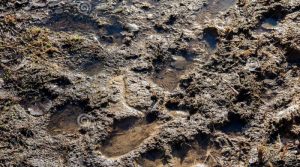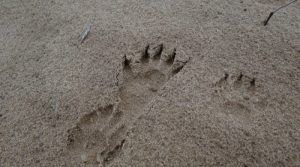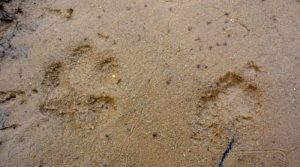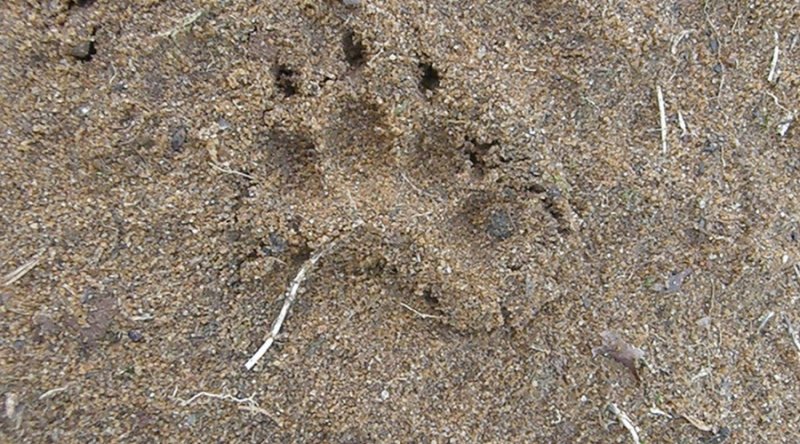Learn 6 Track Features of The European Badger Tracks
&
How to Badger Tracks in Challenging Conditions
In Ireland, Great Britain, most of mainland Europe, and parts of the Middle East, the European badger, Meles is a relatively common, widely-distributed, burrowing omnivore.
You can learn 6 key features of badger tracks in this short article, and just as important, how to track badgers under realistic and challenging conditions.
BADGERS AND BEARS HAVE SOMETHING IN COMMON
There is a lot of similarity between bears and badgers.
Their powerful limbs and long claws are often used for digging by both animals, which are densely muscled and compact.
Despite their poor vision, both possess a keen sense of smell and hearing.
The tracks left by both animals are similar, except that bears leave much larger tracks.
Both badgers and bears have five toes, especially their front feet, which have long, sharp claws.
There is some similarity between badgers and bears despite the fact that they are not related.
The broad, flat-footed, long-clawed tracks of both animals suggest they are voracious, slow-moving, and proficient diggers (as indicated by their very long claws).
Red foxes and wolves have smaller, narrower, elliptical-shaped tracks that facilitate minimal ground contact and faster speed.
An animal’s tracks provide clues to how it interacts with its environment, which is part of their beauty. It is possible to get a sense of an animal’s ecological niche by looking at its tracks.
Tracking begins with positive identification, however. You will be better able to positively identify badger tracks regardless of where they occur in the wild if you read the following descriptions of badger tracks.
As a result of reading this article, the reader will gain a better understanding of both the front and rear tracks of badgers. Once the track details are transferred, it is only a matter of transferring them under challenging conditions.
THE FRONT & REAR TRACKS
OF
THE EUROPEAN BADGER
An adult badger’s front track measures about 4 cm wide and 5-7 cm long (excluding claws). In the rear wheel well, roughly four centimeters are wide and four to seven centimeters are long.
There are four parts to a badger track: claws, toes, a central pad, and a rear pad. It is very rare for the rear pad to show in tracks, but when it does, the track length can vary greatly (hence the length variations of the front and rear badger tracks listed above).
Track measurements for any animal species should, however, be taken with a grain of salt. Several factors can affect the size of the track, resulting in a larger or smaller track than what is commonly mentioned in tracking textbooks.
The footprints of immature animals will be smaller. Tracks left by female adults are typically smaller than those left by male adults. Tracks can be larger than usual when animals move quickly on soft surfaces like snow or mud. Use track measurements as a general guideline when analyzing them.
It is important to use track measurements in conjunction with other track features that are easily identifiable…
A BADGER TRACK HAS SIX RECOGNIZABLE FEATURES
Badger tracks are generally rectangular or boxy in shape.
There are usually five toes and five long claw marks on a clear front track. There are also 5 toes on the rear track and much shorter claws (which often don’t show up in tracks).
The gently curving row of toe pads is a key feature of badger tracks. A slight curve (and broadness) is also present on the central pad.
It is often the case that the small, inner toe and its claw will not show up in the track, resulting in a four-toed track with four claws.
Badger tracks are identified by their exceptionally long claws, their length and width, their general broadness, their broad, curved central pad, and their arrangement of toes in a gentle arc.
Here are the 6 key features of badger tracks:
-
There are five toes (often only four are visible)
- Toes are aligned in a slight curve
-
The central pad is broad and slightly curved
- Tracks often show the very long claws on the front
- There is often no evidence of the rear claws in tracks because they are much shorter than the front claws
- The approximate length of front badger tracks is 5cm, and the approximate width is 2cm. width 4cm.


FIRM SURFACE: Badger tracks tend to sink into firmer surfaces less than they do on softer surfaces, so the claw-tip marks are often visible a considerable distance from the toe pads on firmer surfaces. The toes are also arranged in a gentle curve (photo: Sean Fagan).

PARTIAL TRACKS: Long claw marks and a broad, gently curving rear pad are enough clues to indicate this is a front badger print in this partially obscured track. A badger track is also indicated by the gentle curve of the 3 visible toe pads. It is best to measure the distance from the rear edge of the central pad to the front edge of the toes in order to determine the length of the track (Photo: Sean Fagan).
The most common tracking scenarios are damp surfaces, firm surfaces, and partial tracks.
Tracking is a great challenge that involves all of them.
When travelling to faraway places to practice bushcraft, familiarizing yourself with the tracks and signs of the European badger will help you recognize the tracks of other badger species aboard (since most badger species are similar in size).
Two notable badger species are the honey badger, Mellivora capensis, (Africa, Middle East and India) and the American badger, Taxidea taxus, (most of North America). Both have distinctively broad, five-toed, long-clawed tracks that are universally recognized.
Track features that are generic to each family of mammals can be very helpful in identifying a track’s species.
For example, domestic dogs belong to the canidae family. Like the domestic dog, all wild members of the canidae family, including wolves, coyotes, and foxes, have elliptical-shaped, four-toed, four-clawed tracks.
You may recognize domestic dog tracks from their wild cousins, such as red foxes, timber wolves, or western coyotes, if you are very familiar with domestic dog tracks.
In the future, I’ll cover this topic in more detail.
For now, happy tracking,
Pioneer Bushcraft.
